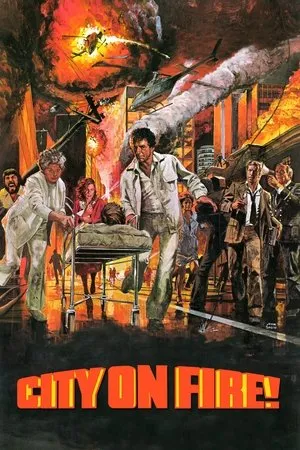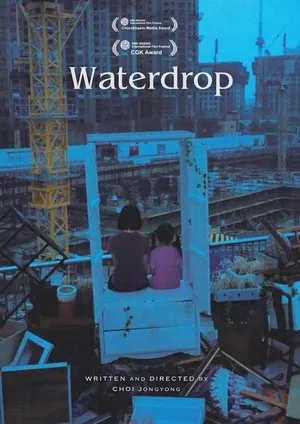City on Fire, released in 1979, is a gripping disaster film that plunges viewers into the heart of an urban inferno. The movie revolves around a devastating chain of events set in motion by a vengeful ex-employee of a city oil refinery. His act of sabotage unleashes a massive explosion, triggering a series of fires that quickly spiral out of control, engulfing the entire city in flames. The film masterfully portrays the escalating chaos and the desperate struggle for survival as the city’s infrastructure crumbles under the relentless onslaught of the fire. The narrative focuses on the interconnected stories of various characters as they navigate the burning cityscape, each facing their own personal challenges and moral dilemmas. The ex-employee, driven by a desire for retribution, sets off a chain reaction that he cannot control, leading to widespread destruction and endangering countless lives. The initial explosion at the oil refinery serves as the catalyst for the city’s descent into chaos. As the fires spread, they consume buildings, bridges, and vital infrastructure, cutting off escape routes and trapping residents within the inferno. The film vividly depicts the overwhelming power of the fire, showcasing its ability to transform a bustling metropolis into a desolate wasteland. Amidst the chaos, the characters are forced to confront their own mortality and make difficult choices in order to survive. Some display acts of heroism, risking their lives to save others, while others succumb to panic and desperation. The film explores the full spectrum of human behavior in the face of extreme adversity. The visual effects in City on Fire are particularly striking, especially considering the technological limitations of the time. The filmmakers effectively create a sense of realism, immersing the audience in the heart of the inferno. The use of practical effects, such as controlled burns and miniature models, adds to the film’s authenticity and enhances the overall viewing experience. The film also delves into the themes of corporate responsibility and the potential consequences of unchecked greed. The oil refinery, portrayed as a symbol of industrial power, becomes the source of the city’s destruction, highlighting the dangers of prioritizing profit over safety. The ex-employee’s act of sabotage can be seen as a desperate attempt to hold the corporation accountable for its negligence, although his actions ultimately result in far greater harm. City on Fire serves as a cautionary tale about the fragility of urban life and the potential for disaster when safety measures are compromised. The film’s enduring appeal lies in its ability to capture the raw emotions and primal instincts that emerge when faced with imminent danger. It is a testament to the resilience of the human spirit and the importance of community in times of crisis. While the film may not be a critical masterpiece, it remains a compelling and visually stunning example of the disaster genre. Its depiction of a city consumed by flames is both terrifying and captivating, leaving a lasting impression on viewers long after the credits roll.

City on Fire (1979)
In "City on Fire," a disgruntled former employee triggers a catastrophic explosion at an oil refinery. This act of vengeance ignites a series of uncontrollable fires that rapidly spread, consuming the entire city in flames. As chaos erupts, the city's infrastructure crumbles, and its inhabitants struggle to survive the escalating inferno.











